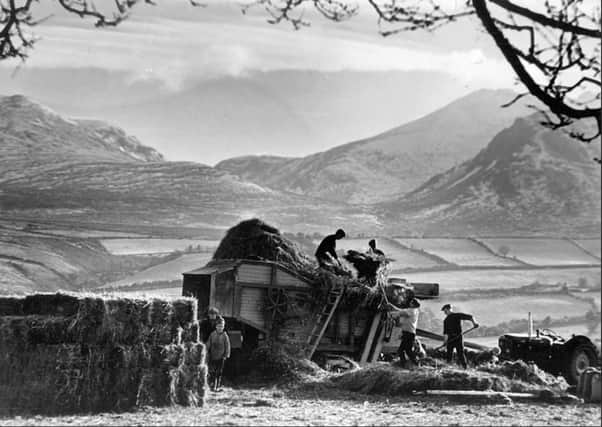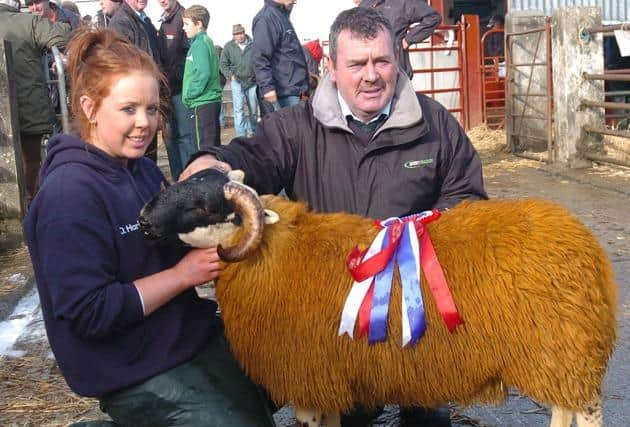BYGONE DAYS: Even a local parish priest was unable to halt ‘poteen’ being brewed


Nor was it curtailed by the “zealous condemnation” of parish priest Father Magee of those who aided or abetted the prime movers in the secret manufacture of spirit, and indeed the assistance that he received from “temperance advocates”.
Reflecting on the prevalence of still-keepers in the Sperrin Mountains one newspaper writer commented:“It may easily be supposed that where such each trade is possible the topography of district must be of an extremely wild precipitous character. In choosing their base of operation the still-keepers have two things to consider - (1) The possession of constant flow of water, and (2) security from observation while the spirit is being distilled. It is for that reason that “poteen brewing” obtained to such an extent in the Sperrin Mountains. The Goals [sic] Glen . . . offers all the advantages which the brewers desire. If it were not for the unwelcome attention with which their movements are watched by the constabulary they would, no doubt, do quite a lucrative trade.”
Advertisement
Hide AdAdvertisement
Hide AdHowever, it was noted that the Goles Glen, was “not proof against their friends in uniform”, and consequently there were always on their guard against a sudden dash on their strongholds.


One amusing incident which had occurred not long previously, had seen the police with a strong suspicion that a big still was about to be started on the Ouske side of the glen, and on a particular night, just when it was thought the brewing operations would be in full swing, a strong party gathered close to the suspected still, and careful precautions having been taken to cut off any retreat of the brewers, the hut was stormed and captured.
The embers of a recent fire were scattered about the place, and everything in and around the still-house made it apparent that the occupiers had made a hurried departure just prior to the arrival of the police. The disappointment of the police can only be imagined.
But as the report remarked: “The birds had flown, and there was nothing to do except destroy the implements used by the brewers.”
Advertisement
Hide AdAdvertisement
Hide AdBefore leaving the scene of “this bloodless battle” the officers strolled quietly around the glen, which was “bathed in all the glories of a beautiful moonlight night”.
Not far from the hut which they had raided “sounds of sweet melody” wafted towards their ears “on the wings of the night wind”.
Stealthily they approached the spot were the music was emanating from.
As they drew nearer the easily distinguished outline of a wayside cottage rose before them in their path.
Advertisement
Hide AdAdvertisement
Hide AdThe turf fire illuminated the two solitary windows of the habitation.
Just as the officers gained the outside of the cottage the song burst forth afresh.
They had no need to search any further for the owners of the still.
Within the hut the poteen was being passed freely around in celebration of their escape.
Advertisement
Hide AdAdvertisement
Hide AdThe brewers were adaptable fellows. The correspondent wrote: “The mode of operations followed by the still-keepers is in several respects interesting. The ‘brew’ takes about four days’ preparation. . . .The site for the still having been decided upon, the necessary ingredients are procured. They are – crushed corn, malt, hops, and barm, or brown sugar, treacle, malt, hops, and barm, the first producing what is known as. . .the real ‘mountain dew’, and the second a ‘poteen’ of less-prized qualities. The latter has a peculiar burning effect on the palate and the digestive organs, one degree more fiery than the ‘mountain dew’.”
The report continued: “The ingredients having been obtained there are conveyed to the scene of operations and here they are carefully concealed until all the preliminary arrangements – such as cutting the turf for the still-house, getting ready the vat, or ‘keeve’ (as they call it), and diverting the stream so that it will flow over a barrel which is placed close to the still-head to receive the ‘worm’. They dissolve the treacle and brown sugar in the ‘keeve’, a turf fire being used for purpose, and when the mixture is properly melted it is transferred into a number of large barrels, when it is set by to work up, the other necessaries being then added. In three days after the fermentation it is cooled down, and ready to be distilled. The still-head and ‘worm’ are then fixed in position, and the fire started.”
The report added: “The flow of water from the mountain stream – and it must be head water – keeps the barrel filled with cold liquid, thus preventing the possibility of the hot steam interfering with the well-being of the ‘worm’. A vessel receives the liquid from the ‘worm’ as it trickles out of the latter condensed by the water in the barrel. After the first run through the still the liquid which is received. . .this must be passed through the still a second time, when it is ready for use.
But despite their still-keepers ingenuity two circumstances in the manufacture of the spirit favoured the constabulary.
Advertisement
Hide AdAdvertisement
Hide AdThe first is the purchase of the materials. Draperstown was the principal market town for the district, and the very fact of a farmer buying large quantities of treacle of brown sugar would have naturally aroused suspicions. Such transactions were closely watched by the authorities and it was noted that very few cases escaped detection.
While the diverting of a stream also attracted the attention of the authorities. The sods had to be cut, in the majority of instances, for a considerable distance. This could not be avoided because of the sufficient incline between the level of the stream and the still head in order to allow that water flowed evenly over the top of the barrel in which the ‘worm’ rested.
Comment Guidelines
National World encourages reader discussion on our stories. User feedback, insights and back-and-forth exchanges add a rich layer of context to reporting. Please review our Community Guidelines before commenting.